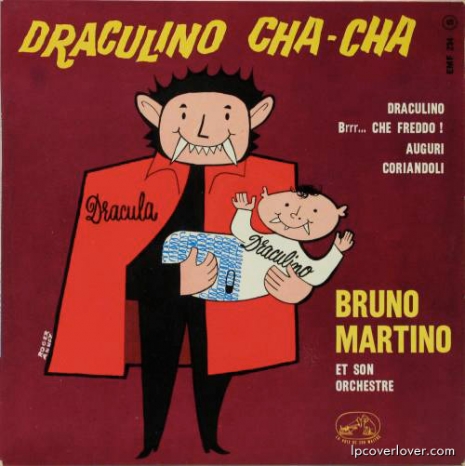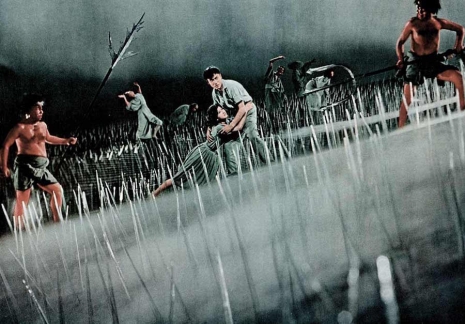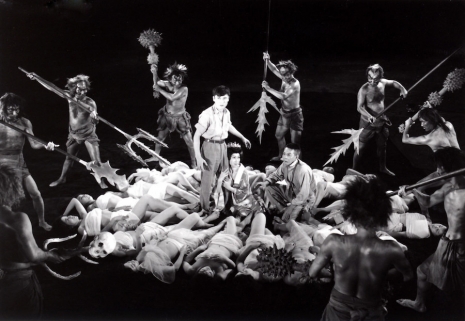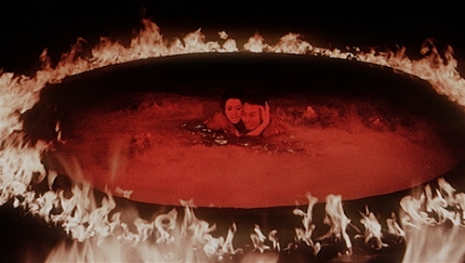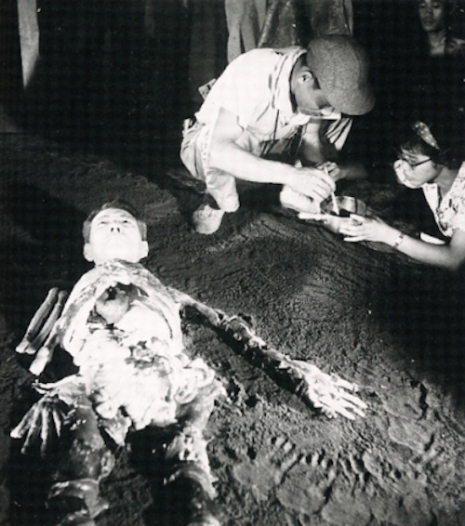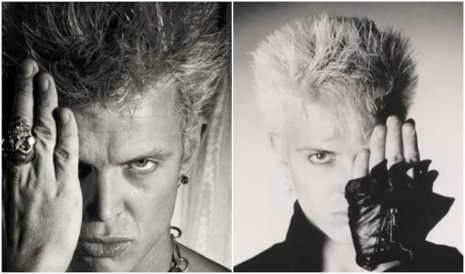
Billy Idol.
Today on Dangerous Minds I present to you two of my favorite things; a vintage, upper-tier European horror film paired with the punk rock icon Billy Idol. The film in question, Les Yeux Sans Visage (Eyes Without a Face) is quite horrifying, though its director George Franju (the co-founder of Cinémathèque Française, an organization that holds one of the largest archives of film documents and film-related objects in the world), didn’t see it that way. Instead, he classified his film as a story revolving around grief and despair, and what can happen once one has reached the very depths of both valleys. Franju’s film was based on the 1959 book Les Yeux Sans Visage by Jean Redon for which Redon had already written a screenplay. Redon’s adaptation would be augmented by French fiction crime author Pierre Boileau, and the film would make its debut in Paris on March 2, 1960. When it was shown at the Edinburgh Film Festival later in the year, it was reported that seven people in the theater fainted during the surgery scene—and if you have seen Les Yeux Sans Visage yourself, this is entirely understandable.
One of my favorite pieces of horror history inspired by this film concerns that maverick of the horror genre, John Carpenter. Actress Edith Scob wore several different masks in Eyes Without a Face which were cast from her own face. Some were created for the many close-up scenes of Scob in the movie which, according to Scob felt like “thin skin glued around the eyes and lips” as well as a thicker mask which could be more easily removed. Carpenter has said the mask worn by Scob played a very important part of his concept for maniac slasher Michael Myers and the mask he wore in 1978’s Halloween.
Others have also been inspired by the film, including Billy Idol who penned what would become his first top-ten hit in the U.S., “Eyes Without a Face” in 1983. Now that the song is perhaps rolling around in your head, the dreamy words cooed in the chorus by Perri Lister (Idol’s girlfriend at the time) are sung in French “les yeux sans visage” and this is a super obvious hat-tip to Franju’s frightening film. The accompanying video for “Eyes Without a Face” was shot in a mere 48 hours during which Idol neglected to take out his contacts. Here’s more from Billy and his actual eye emergency (as told in his fantastic 2014 book Dancing with Myself):
“Back in the 80s I wore hard contact lenses, and after shooting “Eyes Without a Face” for 48 hours, I flew to the next gig in Tucson, Arizona. At that point, I had been wearing them for 36 hours. I hadn’t slept that much—if at all. While waiting for the sound check, I went outside to lay down and passed out on the cool grass outside the college venue. I still hadn’t removed my contacts, until, without warning, I was awakened rather rudely by a sheriff pointing a gun directly at me. I could only hear his voice distant and hollow in my head. When I opened my eyes, I could only make out the outline of his weapon, while tears came pouring from my eyes. Something was wrong! The pain was so intense, and my eyes were gushing. They rushed me to a hospital, and my eyes remained bandaged for two days until my corneas had healed.”
Hearing Idol talk about the pain he was in when his contacts fused with his corneas churns my gut much like the film which inspired his kind-of-creepy hit song. Criterion released a digitally-restored Blu-ray of Les Yeux Sans Visage in 2013, and it is full of some great extras including insightful vintage interviews with Franju, and a recent interview with Edith Scob. As I’d hate to spoil the film for anyone, I’ll refrain from posting images from Les Yeux Sans Visage. Instead, you can watch the trailer which should be plenty enough to entice you into seeing this film as well as footage of Idol, Steve Stevens, and Perri Lister looking good while lip-synching “Eyes Without a Face” during the Saint Vincent Estate music event in Italy in 1984.
Watch after the jump…







